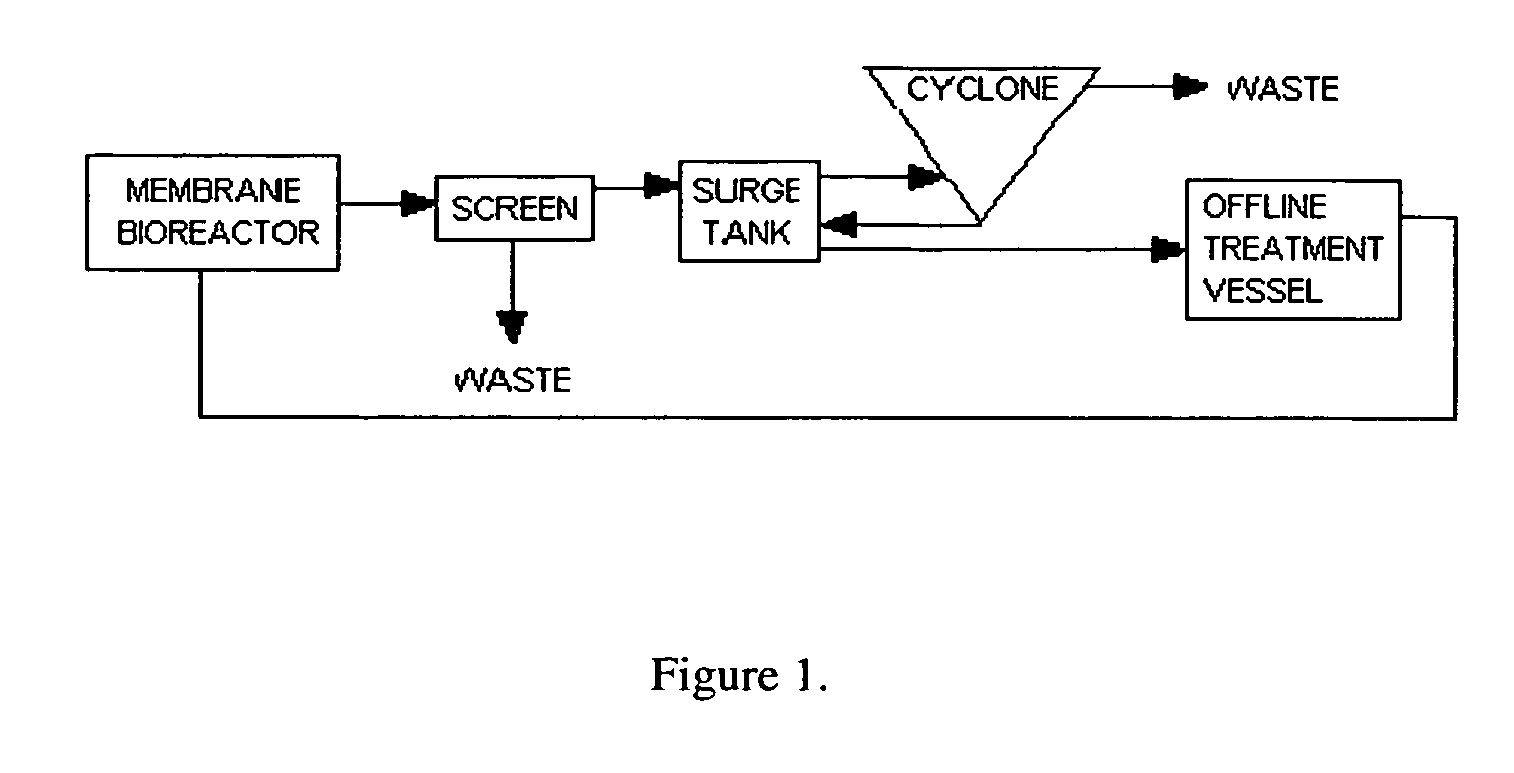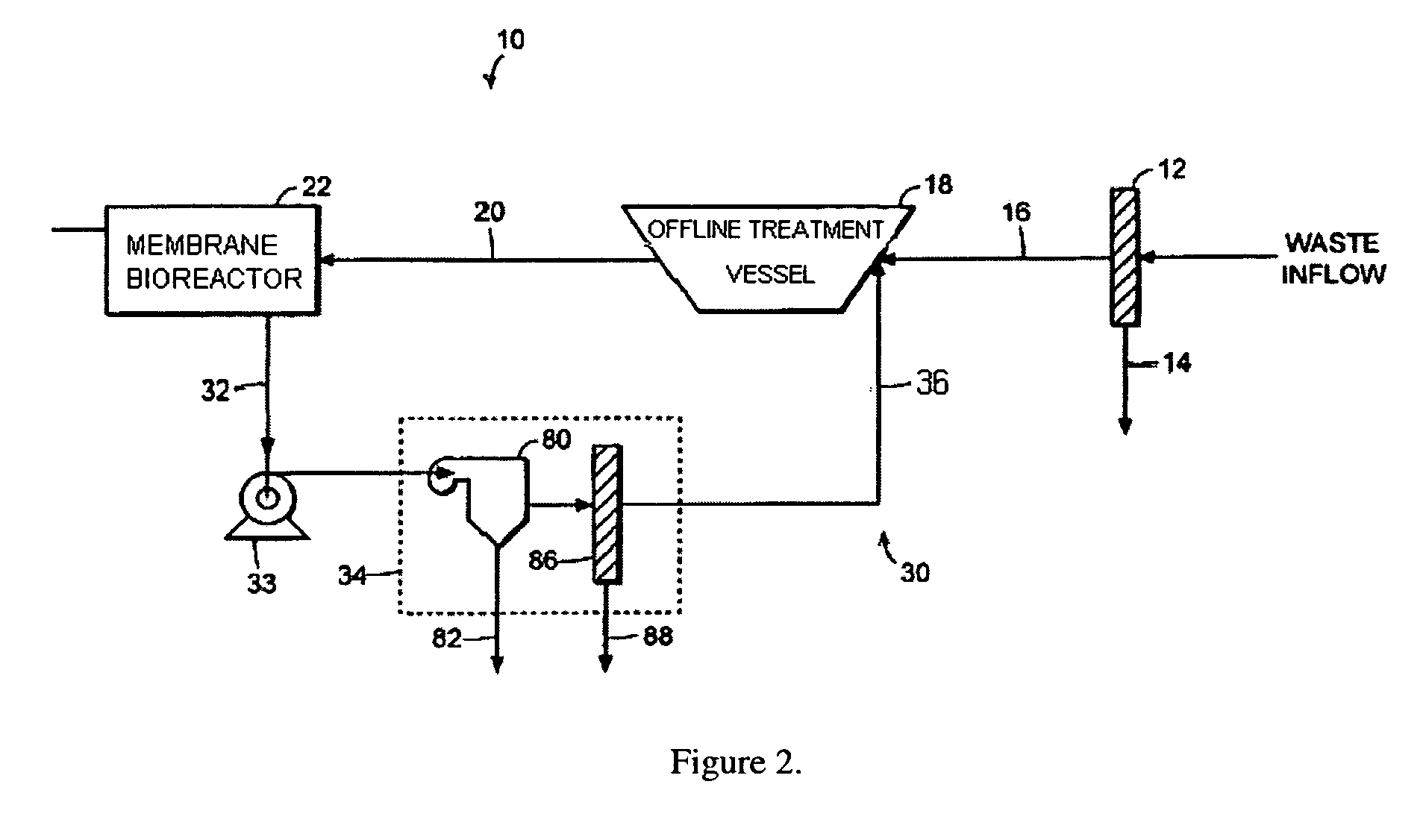Grease and scum removal in a filtration apparatus comprising a membrane bioreactor and a treatment vessel for digesting organic materials
a filtration apparatus and organic material technology, applied in the direction of membranes, multi-stage water/sewage treatment, separation processes, etc., can solve the problems of limiting the applicability of a particular biological approach, affecting the efficiency of filtration, so as to achieve the effect of sludge digestion and reducing the cost and resources required
- Summary
- Abstract
- Description
- Claims
- Application Information
AI Technical Summary
Benefits of technology
Problems solved by technology
Method used
Image
Examples
Embodiment Construction
[0088]The following description and examples illustrate a preferred embodiment of the present invention in detail. Those of skill in the art will recognize that there are numerous variations and modifications of this invention that are encompassed by its scope. Accordingly, the description of a preferred embodiment should not be deemed to limit the scope of the present invention.
[0089]The membrane bioreactor process is a high rate process which operates at elevated mixed-liquor suspended solids (MLSS) concentration to achieve destruction and digestion of organic materials. Combining the membrane bioreactor process with an advanced biological sludge digestion process can provide significant improvements in sludge digestion by reducing the costs and resources required for disposing of digested sludge. The apparatus of preferred embodiments dramatically reduces the production of waste sludge by about 80% or more. In a preferred embodiment, sludge is pumped from the membrane bioreactor ...
PUM
| Property | Measurement | Unit |
|---|---|---|
| size | aaaaa | aaaaa |
| size | aaaaa | aaaaa |
| hydraulic retention time | aaaaa | aaaaa |
Abstract
Description
Claims
Application Information
 Login to View More
Login to View More - R&D
- Intellectual Property
- Life Sciences
- Materials
- Tech Scout
- Unparalleled Data Quality
- Higher Quality Content
- 60% Fewer Hallucinations
Browse by: Latest US Patents, China's latest patents, Technical Efficacy Thesaurus, Application Domain, Technology Topic, Popular Technical Reports.
© 2025 PatSnap. All rights reserved.Legal|Privacy policy|Modern Slavery Act Transparency Statement|Sitemap|About US| Contact US: help@patsnap.com



